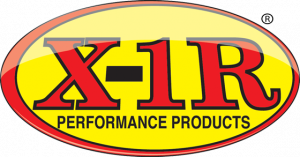ENGINEERING BULLETIN
Do modern Synthetic oils still need an Additive
There are a lot of myths surrounding synthetic oils and even the name is slightly misleading. The history of oil literary dates back thousands of years but synthetic oils originated during the WWII when the British were trying to get their bombers to fly higher faster and longer and the Americans were trying to stop their tank engines over heating in the desert. They discovered that certain ‘plastics’, in particular Poly Alfa Olefins, had the ability to produce hydrocarbon polymers that would stop oil thickening with heat whilst not compromising lower temperature viscosity.
NEW PRODUCT LAUNCH – CVT TREATMENT
For a number of years Auto manufacturers have been developing a range of Continuously Variable Transmissions for use primarily in small to medium cars. The advantage of the CVT is many fold but generally they have fewer moving parts making then cheaper to manufacture and thus the cost saving can be passed on to the consumer. Most will also tell you that because the car is always in the optimum gear fuel consumption is improved in cars fitted with a CVT.
THE ROLE OF ENGINE TREATMENT IN RESTORING ENGINE COMPRESSION
Anyone selling X‐1R will know the frustration of having to continuously test our product to prove it works. Recently Harold Ledda was asked to do this in Qatar within the Mitsubishi Distributor there. AS a seasoned X‐1R Representative Harold of course was unperturbed particularly when he was asked to undertake a compression test in a 2011 Lancer and a 2016 Outlander. The test (full version of which can be seen at the end of this bulletin) was of course
TESTING PROTOCOL
Again I am being requested to write a definitive testing protocol for testing X-1R. The problem that I have with this request is that there are firstly two product groups to be tested and secondly no two tests are the same. To put it simply here are so many potential testing differences to be taken into consideration that it is virtually impossible to write a protocol that will fit all scenario’s.
REVISED EXTREME PRESSURE MODIFIER FORMULATION
Changes in global materials regulations have necessitated a revision to the formulation of those of our products that contain an extreme pressure modifier (EP) component. These changes have been flagged a long time ago and thus were not a surprise but have resulted in our chemists at X-1R Corporation in Daytona working diligently on formulating and testing some changes to our product range to ensure that we would be able to freely transport, store and sell our product without being encumbered by the aforementioned changes.
FILTERS AND CENTRIFUGES
The filtration of oil within an engine is an essential part of the operation of an engine and thus all engines have some form of oil filtration process that is designed to eliminate particulate contamination from the oil and thus avoid the build-up of an abrasive condition within the engine. Recently a number of car companies have introduced oil filters that will filter down to 1.8 microns. Additionally in larger industrial settings it is common for the oil to be circulated via a centrifuge in order to remove particulate contamination. Thus the question has been asked whether either of these levels of filtration will X-1R be removed or separated from the oil.
IMPACT OF X-1R ON EURO 5/6 DIESEL PARTICULATE FILTERS (DPF’S)
Governments around the world have recognized the health threatening and harmful effect of diesel powered vehicles exhaust fumes and as a result have mandated the use of fuels with ever lower polluting properties, you may know this as Euro 5 or even Euro 6. The battle goes as far as the engine oil where and as you may already know, LOW ASH or LOW SAPS engine oil is designed to prevent certain oxides reaching Diesel Particulate Filter or DPF (which handles particulate matter/soot). (SAPS stands for Sulfated Ash, Phosphorous and Sulphur).
ORGANIC MOLYBDENUM COMPOUNDS (OMC)
Within the South East Asian region we are constantly in competition with products that have as their main active ingredient some form of Organic Molybdenum Compound also known as OMC or AOMC, and thus I am being asked a number of questions about this type of additive. Manufacturers of Organic molybdenum claim it to be a second or third generation additive as it is an oil soluble moly compound and not a solid film lubricant, however the solubility claim is open for debate.
REDUCTION OF SLUDGE BUILD-UP WITH THE USE OF X-1R ENGINE TREATMENT
Most manufacturers have now introduced high compression short stroke engines in their bid to reduce fuel consumption in their cars. These engines have the ability to give a much higher power output than was previously possible for smaller capacity engines with the recent 1100cc Ford engine used in the Mondeo capable of outperforming the previous 2000cc engine in the same car. Coupled with the use of these engines there has been a marked increase in the service interval with most manufacturers opting for a 10,000 to 12,000 kilometre average between oil changes.
TECHNICAL BULLETIN MOTOR OIL SLUDGE
Manufacturing modern engine oil is a precision operation. From the time that the crude oil goes into processing, until the finished lubricating oil is stored, careful control of temperatures, pressures and process time is exercised. Elaborate equipment takes undesirable components from the oil. Small, precise amounts of desired compounds are added at certain stages. Throughout the entire operation, extreme care is taken to keep contamination out of the product. Painstaking work is required to produce oils that will give first rate lubrication to engines of all types, under all conditions of operation and service.

 Nigel McKenzie
Nigel McKenzie
